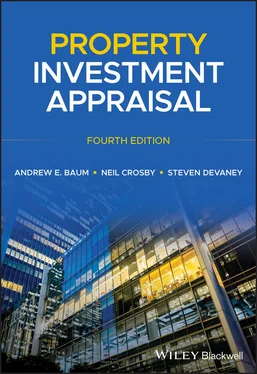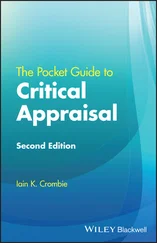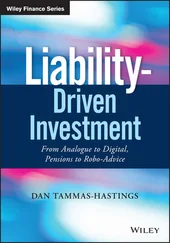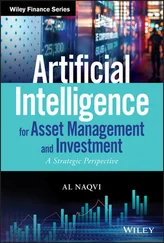1 Cover
2 Title Page Property Investment Appraisal Fourth Edition Andrew E. Baum University of Oxford, UK Neil Crosby University of Reading, UK Steven Devaney University of Reading, UK
3 Copyright
4 Preface
5 1 Property Investment Appraisal in its Context1.1 What is Appraisal? 1.2 The Appraisal Process 1.3 What Makes a Good Appraisal? 1.4 Conventional and Discounted-Cash-Flow Approaches to Appraisal
6 2 Principles of Investment Analysis2.1 Introduction 2.2 Types of Investments 2.3 Qualities of Investments 2.4 Sources of Risk 2.5 Comparing Investments: NPV and IRR 2.6 Initial Yield Analysis and Construction 2.7 Summary
7 3 The DCF Appraisal Model3.1 The Cash Flow Model 3.2 The Inputs 3.3 The Discount Rate 3.4 Examples 3.5 Summary Notes
8 4 The Evolution of Freehold Market Valuation Models4.1 Introduction 4.2 The Evolution of Conventional Techniques 4.3 Rationale of the Pre-1960 Appraisal Approach 4.4 The Post-1960 Conventional Market Valuation Model 4.5 Conclusions
9 5 Contemporary Freehold Market Valuations5.1 Introduction 5.2 Analysing Transactions 5.3 Full Explicit and Short-cut DCF Valuation Models 5.4 Alternatives to DCF 5.5 Reversionary Freehold Valuations 5.6 Over-rented Contemporary Model Valuations 5.7 Summary
10 6 Freehold Market Valuations – Applications6.1 Introduction 6.2 Analysis of Transactions 6.3 Rack Rented or Vacant Property Investments 6.4 Two-Stage Reversionary Freeholds 6.5 More Complex Reversionary Freeholds 6.6 Comparing Conventional and Contemporary Techniques 6.7 Taxation and Market Valuation 6.8 Conclusions
11 7 Leasehold Valuations7.1 Introduction 7.2 The Evolution of Conventional Leasehold Valuations 7.3 Contemporary Leasehold Valuations 7.4 Conventional Versus Contemporary Techniques 7.5 The Limitations of the Contemporary Models for Leaseholds 7.6 Taxation and the Market Valuation of Leaseholds 7.7 Conclusions
12 8 Measurement and Pricing of Risk in Appraisals8.1 Introduction 8.2 Nature and Sources of Risk 8.3 Measuring Risk 8.4 Risk Pricing 8.5 Summary Notes
13 9 Development Appraisal9.1 Introduction 9.2 Valuation Methods 9.3 Developer's Profit 9.4 Changes in Costs and Values and Phasing of Developments 9.5 Finance 9.6 Conclusion Notes
14 10 Bank Lending Appraisals10.1 Introduction 10.2 The Bank Lending Valuation Problem 10.3 Market Value 10.4 Mortgage Lending Value 10.5 Basel III Definition of Long-term Value 10.6 Investment Value 10.7 Illustration of the Three Established Approaches 10.8 Performance of the Three Valuation Bases over the Last Two Property Market Downturns in the UK 10.9 Summary and Conclusions
15 11 Conclusions
16 Bibliography
17 Index
18 End User License Agreement
1 Chapter 1 Table 1.1 Weighted average absolute differences between valuations and prices... Table 1.2 Weighted average differences between valuations and prices 2000 to ...
2 Chapter 2 Table 2.1 Cash flow for a fixed-interest bond. Table 2.2 Cash flow for an index-linked bond. Table 2.3 Total returns from mainstream asset classes in the UK, 1981–2018. Table 2.4 Geared and ungeared returns. Table 2.5 A real and nominal risk hierarchy. Table 2.6 Projected cash flow for investment ATable 2.7 Projected cash flow for investment B
3 Chapter 3Table 3.1 Typical information requirements for discounted cash flow (DCF) app...Table 3.2 Influences on capitalisation rate and target rate selection.Table 3.3 Cash flow for Example 3.1.Table 3.4 Resale price and NPV calculations.Table 3.5 Refurbishment, resale price and NPV calculations.Table 3.6 Cash flow for Example 3.3.Table 3.7 Resale price, PV and investment value calculations.Table 3.8 Cash flow for Example 3.4.Table 3.9 Interest-only loan and associated investor cash flow.Table 3.10 Amortised loan and associated investor cash flow.
4 Chapter 4Table 4.1 Nottingham city centre retail property rents, yields and inflation ...Table 4.2 Fully let freehold cash flow.Table 4.3 Reversionary cash flow.
5 Chapter 6Table 6.1 Indexed lease cashflow.Table 6.2 DCF and arbitrage valuation, indexed and stepped leases.Table 6.3 Cashflow, Example 6.9, target rate 7.75%.Table 6.4 Cashflow, Example 6.9, target rate 15%.Table 6.5 Unexpired term (in years) at which the highest target rate does not...Table 6.6 Explicit-DCF net-of-tax valuation.
6 Chapter 7Table 7.1 Capitalisation rates for terminable incomes.Table 7.2 Performance of comparable and subject at different rental growth r...Table 7.3 Leasehold valuations based upon ranges of freehold and leasehold r...
7 Chapter 8Table 8.1 Risk-adjusted cash flow discounted at the risk-free rate
8 Chapter 9Table 9.1 Example 9.1 Table of inputs.Table 9.2 Example 9.1 : Basic residual valuation.Table 9.3 Example 9.1 Discounted cash flow based on Wyatt (2013, pp. 409–411)...Table 9.4 Analysis of developer returns – inputs.Table 9.5 Variation in developer's profit given a fixed IRR of 20%.Table 9.6 Hypothetical residual land values with different levels of growth i...Table 9.7 Example 9.1 - Treatment of finance within the cash flow.
1 Chapter 1 Figure 1.1 UK valuation accuracy and bias (value weighted figures): 1983 to... Figure 1.2 Volatility of valuation and transaction-based series (SD % pq): ...
2 Chapter 2 Figure 2.1 Profile of property investment values through time – freehold. Figure 2.2 Profile of property investment values through time – leasehold. Figure 2.3 The risk–return trade-off. Figure 2.4 Risk and return in a two-asset portfolio. Figure 2.5 Multi-asset portfolio efficient frontiers. Figure 2.6 The efficient frontier with a risk-free asset.
3 Chapter 4Figure 4.1 UK all property monthly equivalent yields and UK 10-year governme...Figure 4.2 Reversionary income profile.Figure 4.3 UK rental value change June 1977 to March 2018 (% per quarter) ....Figure 4.4 Over-rented property income profile.Figure 4.5 Double counting in over-rented property valuation.
4 Chapter 5Figure 5.1 Nominal and real rents.Figure 5.2 Capital values in real terms.
5 Chapter 6Figure 6.1 Over-rented income profile assuming a breakthrough between first ...Figure 6.2 Over-rented income profile assuming no breakthrough before last r...
6 Chapter 7Figure 7.1 Fixed profit rent income profile.Figure 7.2 Geared profit rent growth income profile.Figure 7.3 Unsynchronised reviews – income profile.
7 Chapter 8Figure 8.1 NPV and IRR simulation results.Figure 8.2 Simulation inputs and distributions.
8 Chapter 9Figure 9.1 Treatment of time in a simple residual development valuation.Figure 9.2 Mean, median and standard deviation of development and investment...
9 Chapter 10Figure 10.1 A stylised view of the Market Value and Mortgage Lending Value b...Figure 10.2 A stylised view of the three different concepts of value for ban...Figure 10.3 All property UK Market Values 1982–2015. Compiled by authors fro...Figure 10.4 Differences between Market Value and MLV/IV 1982–2015. Compiled ...Figure 10.5 UK capitalisation rates and rental growth forecasts between 1982...
1 Cover
2 Table of Contents
3 Begin Reading
1 iii
2 iv
3 xi
4 xii
5 xiii
6 1
7 2
8 3
9 4
10 5
11 6
12 7
13 8
14 9
15 10
16 11
17 12
18 13
19 14
20 15
21 16
22 17
23 18
24 19
25 20
26 21
27 22
28 23
29 24
30 25
31 26
32 27
33 28
34 29
35 30
36 31
37 32
38 33
39 34
40 35
41 36
42 37
43 38
44 39
Читать дальше












